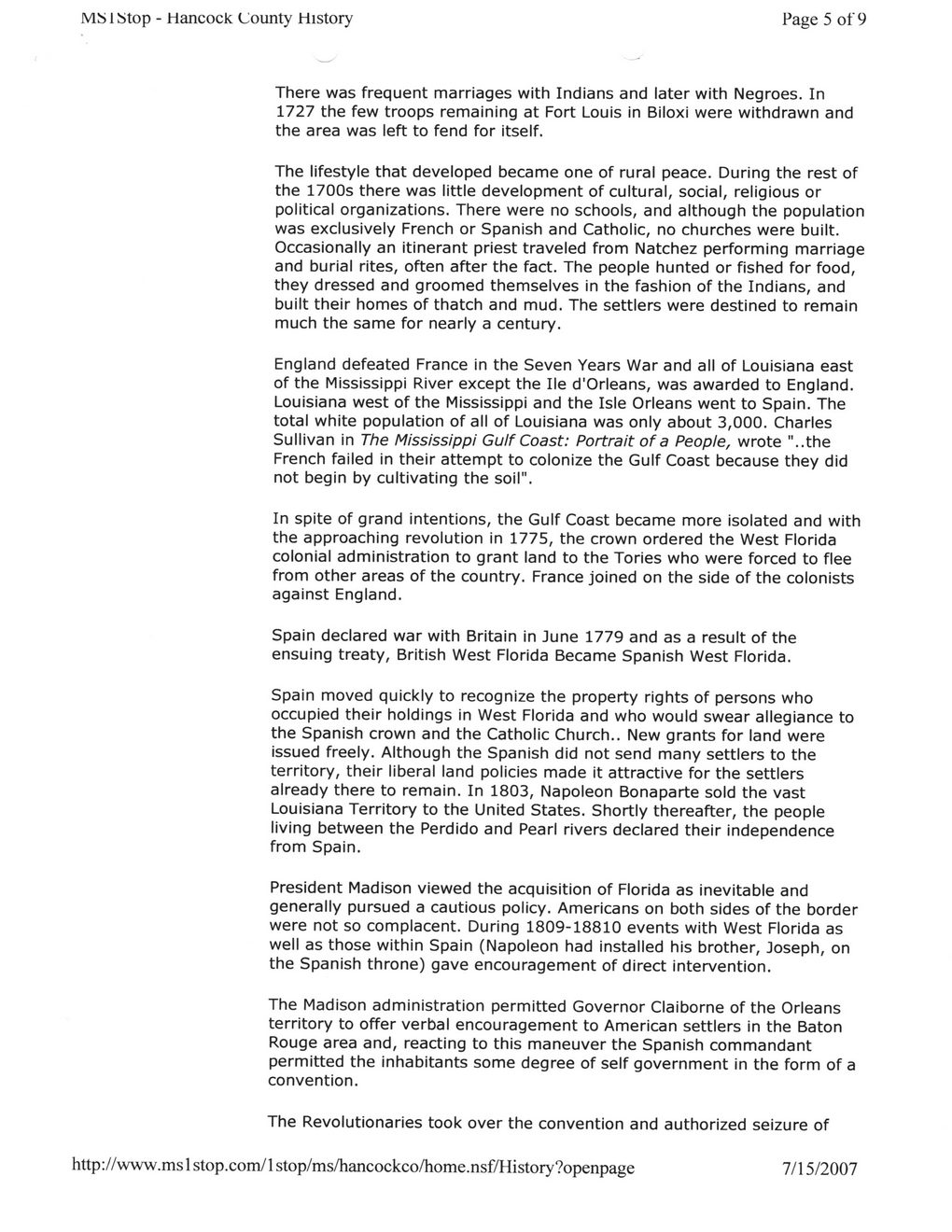This text was obtained via automated optical character recognition.
It has not been edited and may therefore contain several errors.
MS 1 Stop - Hancock County History Page 5 of 9 There was frequent marriages with Indians and later with Negroes. In 1727 the few troops remaining at Fort Louis in Biloxi were withdrawn and the area was left to fend for itself. The lifestyle that developed became one of rural peace. During the rest of the 1700s there was little development of cultural, social, religious or political organizations. There were no schools, and although the population was exclusively French or Spanish and Catholic, no churches were built. Occasionally an itinerant priest traveled from Natchez performing marriage and burial rites, often after the fact. The people hunted or fished for food, they dressed and groomed themselves in the fashion of the Indians, and built their homes of thatch and mud. The settlers were destined to remain much the same for nearly a century. England defeated France in the Seven Years War and all of Louisiana east of the Mississippi River except the lie d'Orleans, was awarded to England. Louisiana west of the Mississippi and the Isle Orleans went to Spain. The total white population of all of Louisiana was only about 3,000. Charles Sullivan in The Mississippi Gulf Coast: Portrait of a People, wrote "..the French failed in their attempt to colonize the Gulf Coast because they did not begin by cultivating the soil". In spite of grand intentions, the Gulf Coast became more isolated and with the approaching revolution in 1775, the crown ordered the West Florida colonial administration to grant land to the Tories who were forced to flee from other areas of the country. France joined on the side of the colonists against England. Spain declared war with Britain in June 1779 and as a result of the ensuing treaty, British West Florida Became Spanish West Florida. Spain moved quickly to recognize the property rights of persons who occupied their holdings in West Florida and who would swear allegiance to the Spanish crown and the Catholic Church.. New grants for land were issued freely. Although the Spanish did not send many settlers to the territory, their liberal land policies made it attractive for the settlers already there to remain. In 1803, Napoleon Bonaparte sold the vast Louisiana Territory to the United States. Shortly thereafter, the people living between the Perdido and Pearl rivers declared their independence from Spain. President Madison viewed the acquisition of Florida as inevitable and generally pursued a cautious policy. Americans on both sides of the border were not so complacent. During 1809-18810 events with West Florida as well as those within Spain (Napoleon had installed his brother, Joseph, on the Spanish throne) gave encouragement of direct intervention. The Madison administration permitted Governor Claiborne of the Orleans territory to offer verbal encouragement to American settlers in the Baton Rouge area and, reacting to this maneuver the Spanish commandant permitted the inhabitants some degree of self government in the form of a convention. The Revolutionaries took over the convention and authorized seizure of http://www.msl stop.com/1 stop/ms/hancockco/home.nsf/History?openpage 7/15/2007

Hancock County A-Touch-of-History-(5)